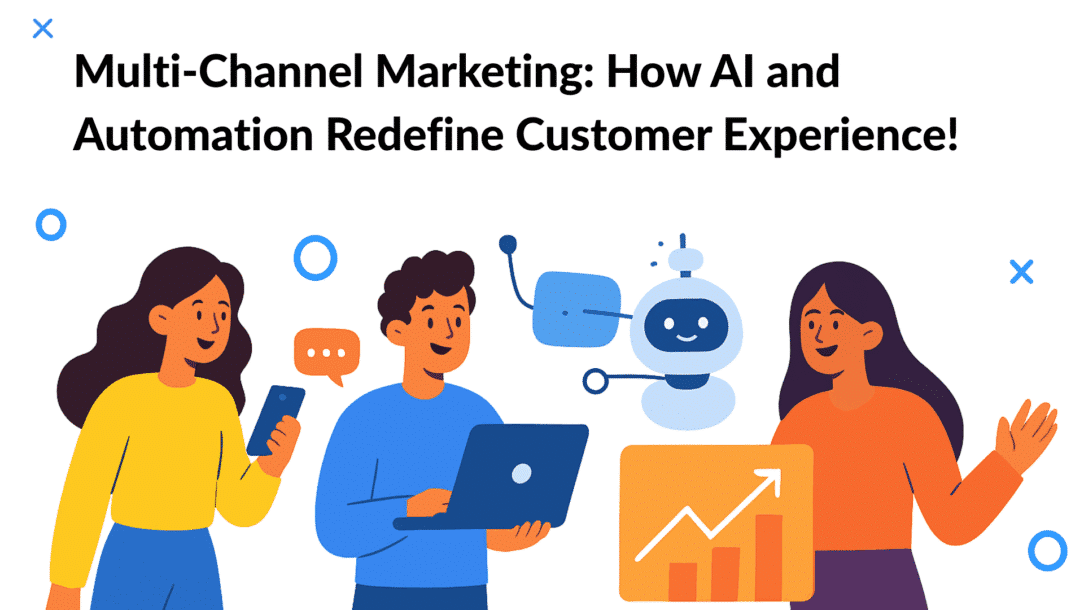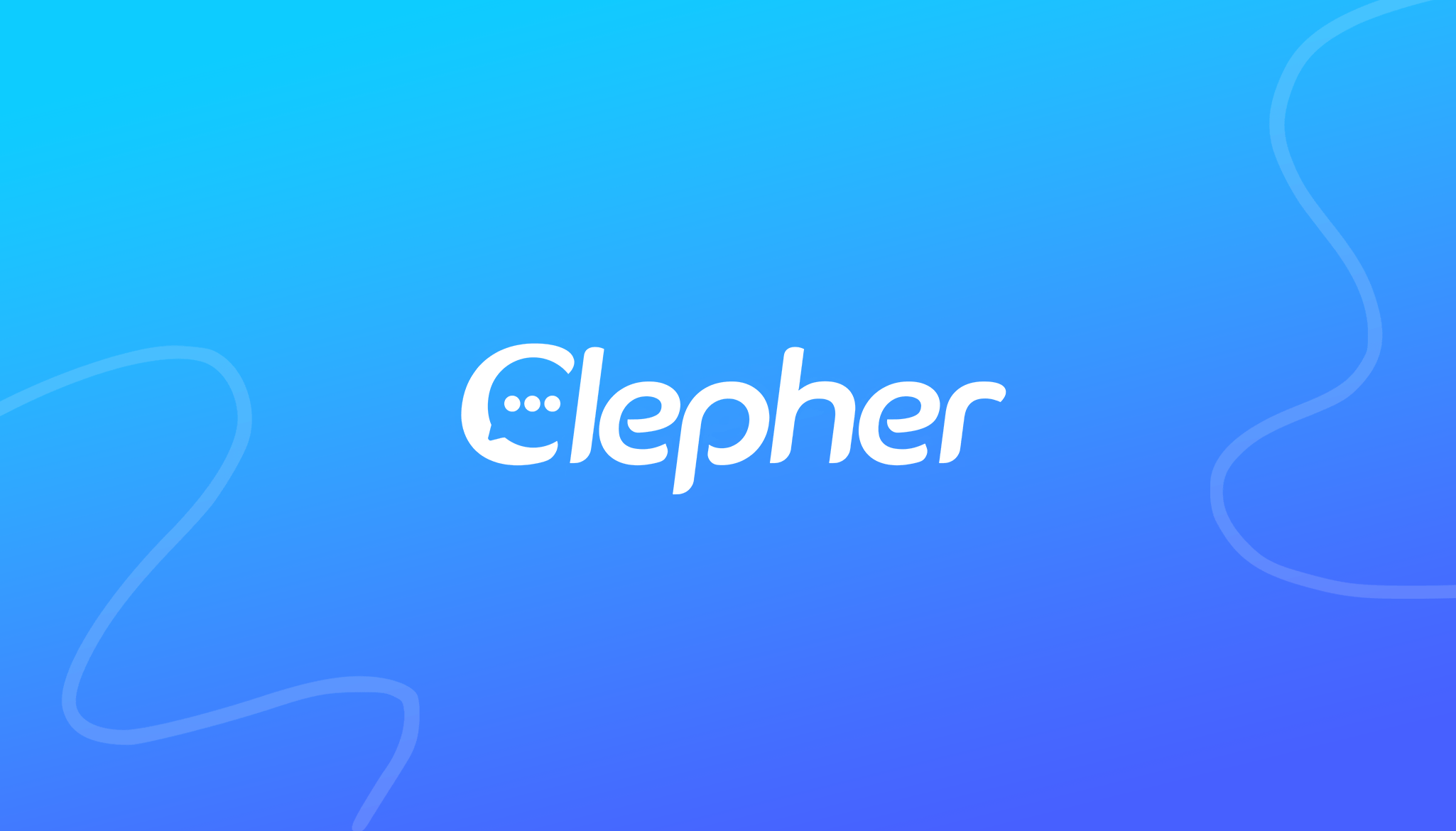Multi-channel marketing is evolving faster than most brands can keep up. Today’s buyers don’t just want service—they want smart, instant, and personalized interactions everywhere: Instagram, WhatsApp, email, live chat—you name it.
A recent Salesforce report found that 73% of customers expect companies to understand their unique needs, and 76% get frustrated when experiences feel impersonal. Add to that, businesses using AI-driven automation see up to 3x higher customer retention and 2x faster response times across channels. That’s not just progress—it’s transformation.
AI isn’t just answering questions—it’s anticipating them. Automation doesn’t just save time—it scales empathy. When combined, they create seamless, connected experiences that make even small brands feel as capable as global giants.
Think about it: from predictive chatbots that reply in seconds to automated workflows syncing messages across social, email, and web—AI is quietly building the backbone of modern customer experience.
The future of customer engagement isn’t coming—it’s already here. The question is: will your multi-channel marketing strategies use AI to react faster, personalize deeper, and connect smarter—or keep customers waiting while competitors automate the relationship?
How Automation Brings Seamless Customer Experience
Running multi-channel marketing campaigns isn’t just time-consuming—it’s chaotic. Customers jump from Instagram to WhatsApp to your website, expecting you to recognize them instantly. Without a system to track, connect, and respond, that’s almost impossible.
That’s where automation steps in—not as a luxury, but as the backbone of modern marketing.
From Repetition to Real Connection
Think about it. Instead of manually following up with leads, automation tools send personalized messages based on customer actions.
Someone visits your landing page but doesn’t buy it? They get an automated reminder or a chatbot message offering help.
Does a returning customer click on a product again? They receive a customized discount code.
According to HubSpot’s 2024 State of Marketing Report, businesses using marketing automation see a 53% boost in cross-channel engagement and are 2× more likely to maintain brand consistency across all platforms. That’s not a coincidence—it’s structure over stress.
AI Makes It Smarter
Artificial Intelligence takes automation further. It analyzes customer behavior and predicts intent—what they’ll click, when they’ll respond, and which channel they’ll prefer next. No more guessing games, just intelligent interaction.
Even small brands are using this edge via multi-channel marketing. With tools like Clepher, they automate conversations across Messenger and Instagram—building chatbots that handle FAQs, follow-ups, and sales conversions in real time.
The result? Customers feel seen and heard on every platform—without a single marketer staying up late to reply manually.
Automation doesn’t replace the human touch—it amplifies it. It gives your business the power to respond instantly, stay consistent, and make every interaction feel personal.
Personalization at Scale: How AI Turns Data into Human Experience
If there’s one thing modern customers crave, it’s relevance. They want brands to get them — to know what they want before they even type it. That’s where AI and automation transform from buzzwords into business superpowers.
The Data Behind Every “Wow” Moment
AI isn’t just collecting data; it’s decoding behavior. It watches when your customers open emails, what products they linger on, which DMs they reply to, and when they vanish mid-checkout. Then it connects the dots.
A report by Salesforce (2024) found that 73% of consumers expect companies to understand their unique needs, and those that use automation to deliver personalized experiences see 2x higher engagement.
This isn’t about showing a “Hello {first_name}” greeting — it’s about crafting entire customer journeys that feel one-on-one at scale.
Imagine this:
A user clicks on a Facebook ad for a skincare brand. Minutes later, they received a Messenger chatbot message from Clepher asking about their skin type. Based on their answers, it recommends a personalized product combo — and follows up with an email containing real customer testimonials.
That’s personalization meeting automation — across platforms, in real time.
Why This Matters Now
Because attention spans are shorter, inboxes are fuller, and competition is brutal. The brands that will win are those that listen digitally — turning behavioral data into human conversations.
AI lets small businesses act like global brands, and global brands feel like local ones. It closes the empathy gap that once made marketing feel cold.
Building Loyalty Beyond the Sale: When Automation Feels Human
Getting a customer once is hard. Keeping them — that’s where smart brands quietly dominate.
Today’s loyalty isn’t built through discounts or flashy ads. It’s built through moments — the little reminders that a brand sees you, knows you, and speaks when it matters.
AI That Actually Remembers You
Think about Starbucks. Its AI-driven Rewards app doesn’t just reward purchases; it predicts cravings.
On a cloudy day, it might send you:
“Your favorite Caramel Latte sounds perfect for this weather.”
That’s not a coincidence — it’s data meeting empathy. According to Forbes (2024), Starbucks’ personalization engine now drives over 40% of its total sales.
Then there’s Sephora — blending automation and emotion.
Its AI chatbot connects customers across the app, website, and Messenger, suggesting skincare routines or makeup matches in seconds. The system doesn’t forget you; it follows up, learns your tone, and adapts.
That’s not “just” automation — that’s conversational memory in motion.
When Conversations Create Communities
Brands like Domino’s and Nike are using AI chat assistants to handle routine queries across their multi-channel marketing campaigns, but they’ve noticed something deeper — these bots actually spark engagement. Customers interact more frequently because they get faster, relevant, human-like responses.
This multi-channel rhythm — a DM here, a notification there, an email tomorrow — doesn’t feel forced. It feels like a relationship that flows naturally across platforms.
The Emotional Edge of Automation
AI is no longer about replacing people. It’s about helping brands be present everywhere, instantly, and personally.
A PwC (2025) study found 59% of customers are willing to pay more for personalized experiences.
That’s the emotional ROI of automation — when every ping, message, or chatbot reply feels like it’s written just for you.
Conclusion: The Future of Multi-channel Marketing Is Already Talking Back
We’ve officially crossed the line where automation isn’t optional — it’s expected.
Every ping, chatbot message, and email reply adds up to a brand’s personality. The question isn’t “Should we use AI?” anymore — it’s “How human can we make it feel?”
The big brands already figured this out. Starbucks predicts, Sephora remembers, Nike engages — all powered by multi-channel AI systems that know when to talk and when to listen.
But here’s the good news: small businesses don’t need billion-dollar budgets to do the same. That’s where Clepher steps in.
Clepher gives businesses the same AI superpowers — from building smart chatbots on Instagram and Messenger to automating replies that feel personal, not robotic. It’s where marketing meets conversation — helping your brand stay human, even when it’s automated.
Because in 2025 and beyond, customer experience isn’t about being everywhere —
it’s about being there at the right moment, with the right message, in the right voice.
And that’s exactly what Clepher helps you do.
Related Posts



